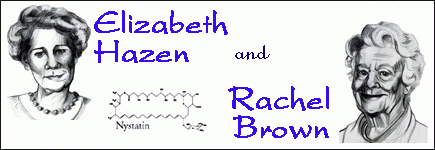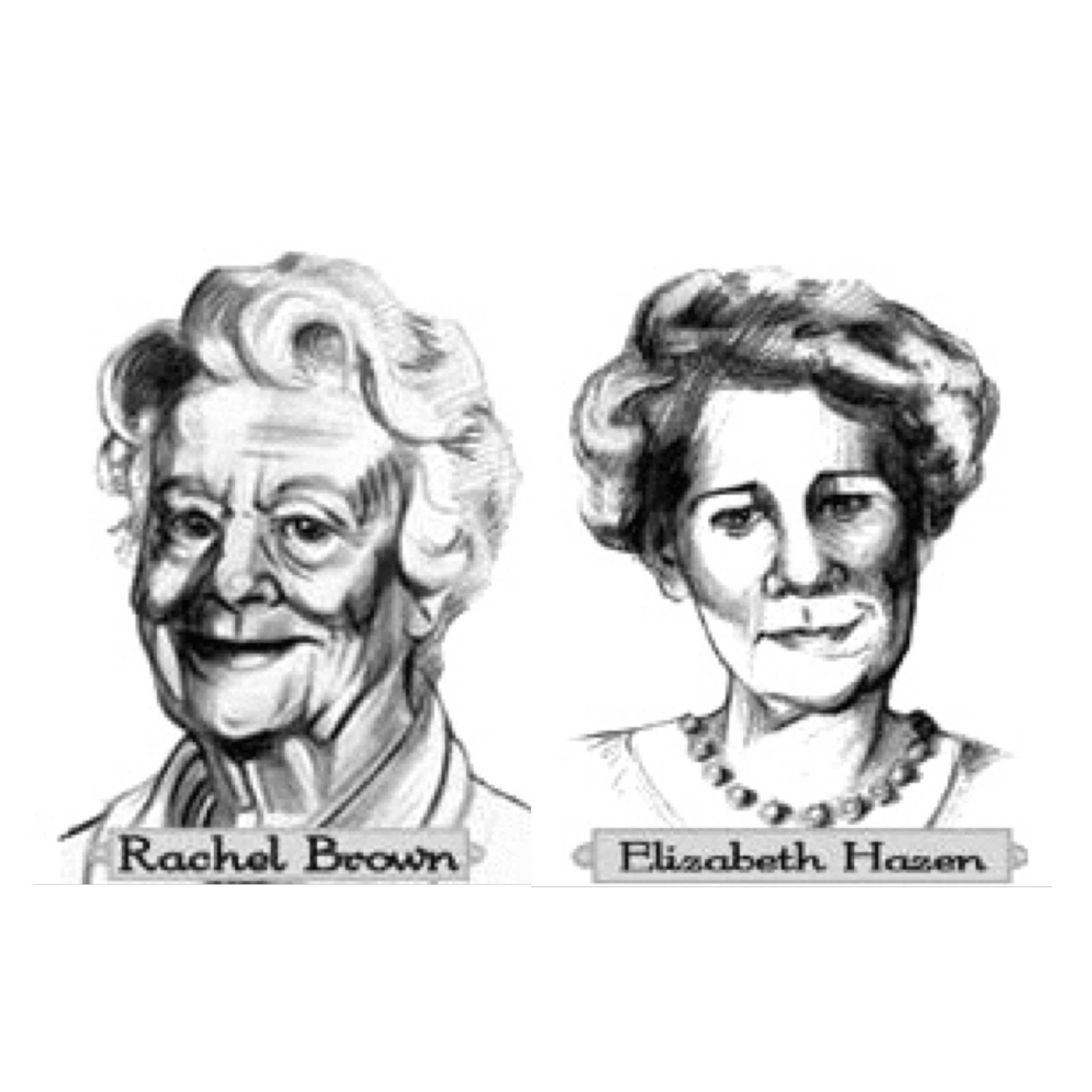Rachel Brown and Elizabeth Hazen
One of the most famous tales in the history of American medical science is the long-distance collaboration of Elizabeth Lee Hazen (1885-1975) and Rachel Fuller Brown (1898-1980), who developed and patented a wonder drug of the 20th century: the world's first successful fungus-fighting antibiotic.
Under the auspices of the New York State Department of Health, Hazen was working in New York City to develop a medicine to kill various forms of fungus, while Brown, in Albany, used her expertise to provide Hazen with specific and suitable forms of bacteria on which to work. After months of exchanging soil samples and information through the U.S. mail, they invented "Nystatin" (named for "NY State Dept. of Health"), for which they eventually earned patent #2,797,183 on June 25, 1957.

Fungal infections had been a major problem for soldiers in World War II. New drugs like penicillin were no help. On the contrary, these drugs kill the body's bacteria that fight fungus. Hazen and Brown's Nystatin, still used today under various trade names, not only cures various potentially devastating fungal infections of the skin and digestive system, but has even been used to combat Dutch Elm disease in trees and to restore artwork damaged by water and mold.
Hazen and Brown invested all their royalties from Nystatin (over $13 million) in the nonprofit "Research Corporation," which had helped them earlier to obtain a patent for their drug. Their generosity has provided the opportunity for a great deal of further medical research, and their example has inspired many women to pursue a scientific career.


